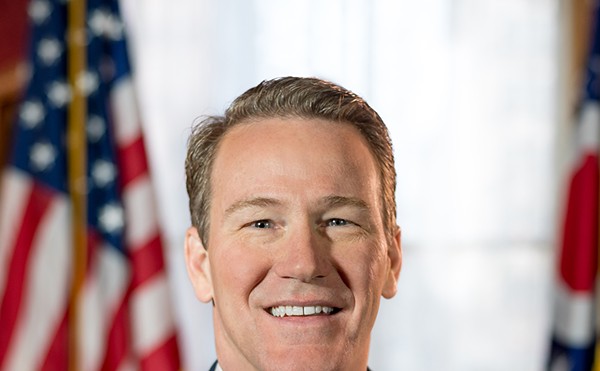An organization committed to expanding environmentally clean jobs recently released a report detailing recommendations for how Cincinnati could become a national leader in creating more so-called “green” jobs.
Issued by the Blue Green Alliance, the 80-page report is envisioned as the first step in transitioning Cincinnati’s old-style Rust Belt manufacturing industry to meet the new green initiatives cropping up across the nation.
As joblessness continues to be felt across Greater Cincinnati, backers say the report could help provide a remedy. The Blue Green Alliance sees the creation of a green job market as an important step in evolving the region's economy.
“The real hope is that (this transition) will encourage new business growth as well as jobs,” says John Dybvig, economic development manager for the Blue Green Alliance.
Greater Cincinnati has a head-start on other areas. A 2009 Pew Charitable Trusts’ report, The Clean Energy Economy, ranked Cincinnati fourth in the nation for green manufacturing jobs.
Between 1998-2007, Ohio's clean energy economy grew by 7.3 percent, compared with a 2.2 percent decline in overall jobs statewide. Ohio had 6.3 million jobs, accounting for 0.56 percent of its economy.
According to Susan Brownknight, Blue Green Alliance Cincinnati's vice president, the region is an ideal location for this change because it has several key characteristics.
“Good light infrastructure, cutting-edge universities that are developing workers to tackle these issues and the river is a critical piece,” Brownknight says.
Besides creating jobs, the transition also would develop a more positive reputation for Cincinnati and its manufacturing industry, much of which dates to the 19th century.
Becoming a hub for green manufacturing, “puts Cincinnati a) on the map and b) ahead of other cities in the country,” Dybvig says.
Formed in 2006, the Blue Green Alliance is a partnership between environmental organizations and labor unions to push a common political agenda that includes promoting the growth of renewable energy sources and improving air quality standards. Its primary partners — the United Steelworkers and the Sierra Club — are working together to reduce the threat of global warming and stop the flow of U.S. jobs overseas caused by free trade agreements.
Many people, however, wonder what exactly is a green job; some believe it must involve wearing hemp and hugging trees. Not quite.
The Blue Green Alliance defines a green job as one that produces green products and services while offering living wages and benefits to workers.
A green job is about more than the products or final outcomes of manufacturing; it’s also about the process of production, the buildings in which items are produced and how products are used that make jobs or industry green. The hope is that all jobs eventually can be “green-ified,” backers say.
“I love solar and wind, but those aren’t the only companies that have green jobs,” says Shawn Hesse, the report's author and primary researcher.
The initial steps of implementing the report's recommendations are already taking place with the creation of a Green Jobs Council. The Blue Green Alliance sees the council as the key resource for companies, labor unions and government to begin the transition to green jobs.
“The objective is the Green Jobs Council will provide political capital needed to implement these things,” Hesse says.
It suggests partnering with existing economic development initiatives such as the Greater Cincinnati Workforce Network and Agenda 360.
A lack of a coordinated effort has been the major stumbling block keeping companies from creating green jobs. Although government incentives, educational resources and various organizations exist to support the movement towards green jobs, the problem has been coordinating these efforts and making companies aware of the options.
The Green Jobs Council will serve as a resource for businesses and strive to have a diverse membership so that all key players in industry will have a role. It will include representatives from business, elected officials and labor union leaders.
“One thing that sets Cincinnati apart is in other states the council is formed in a top-down approach, and in Cincinnati it’s the opposite,” Hesse says.
Other recommendations include tying the granting of tax abatements to adherence of green building standards and offering tax incentives for firms that purchase fuel efficient vehicles or other eco-friendly equipment.
Survey results indicate the council's creation should be a welcome change. Several companies were asked to voice opinions and answer a questionnaire as part of the report and many were interested in seeing this type of resource become available to help improve their bottom lines.
“There are contracts out there to be had,” Brownknight says.
Despite the council's creation, the transition to green manufacturing won’t happen overnight.
“There’s still a lot of work that needs to be done,” Hesse says. “Now is when the heavy lifting starts.”





